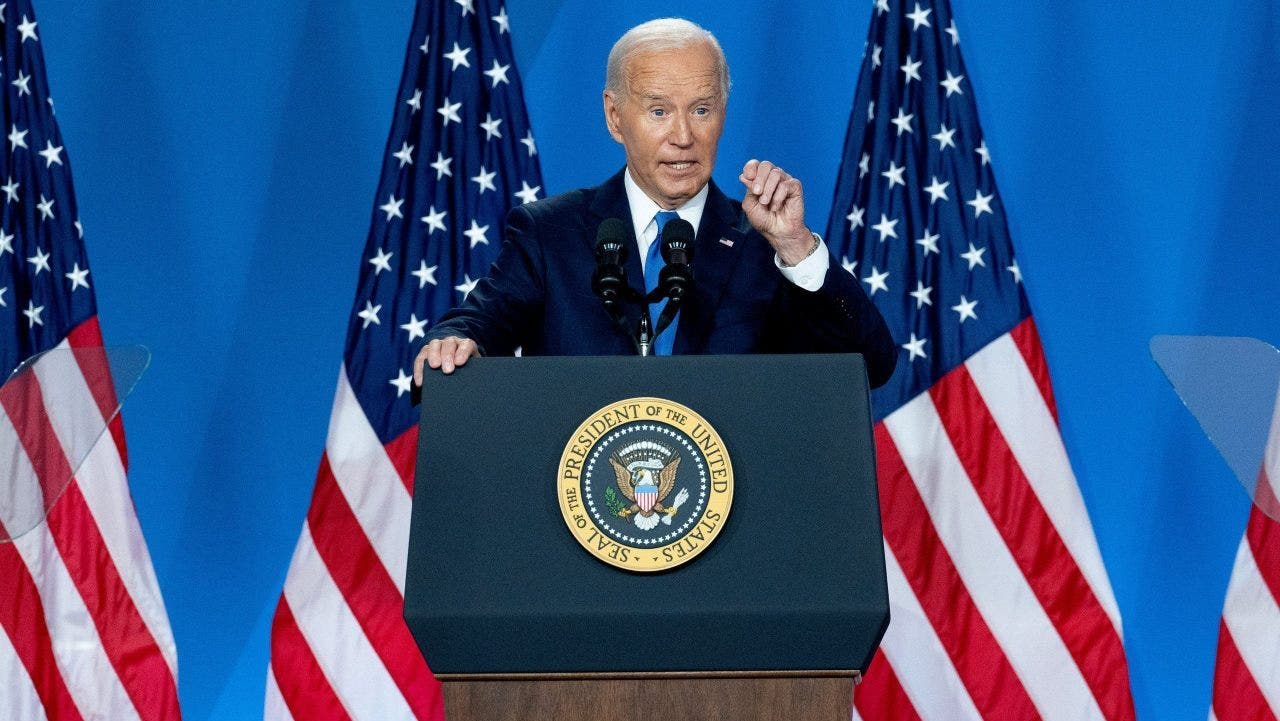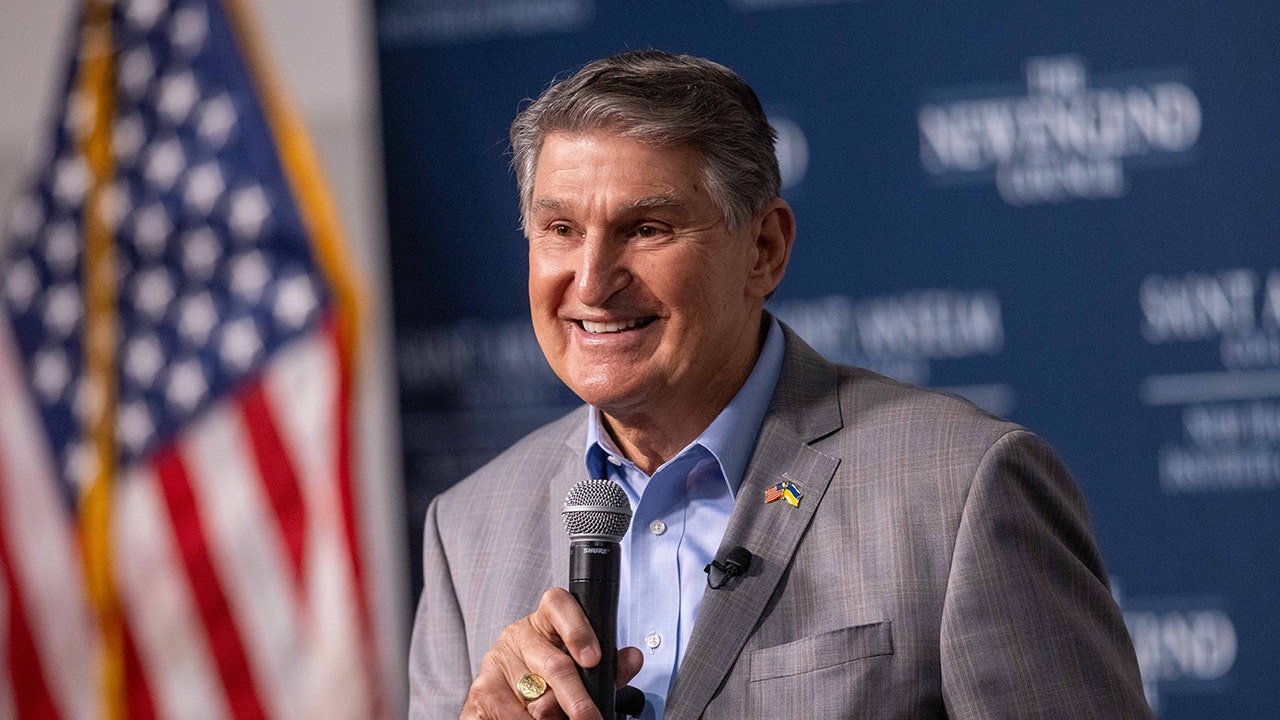North Dakota
Permitting reform included in debt ceiling deal will benefit North Dakota, Armstrong says

WASHINGTON – Policy included in the proposed debt ceiling deal to streamline permitting for infrastructure projects is good news for energy producing states like North Dakota, says U.S. Rep. Kelly Armstrong, R-North Dakota.
“It’s going to help get infrastructure in the ground in a quicker time and thereby free up capital for infrastructure projects,” Armstrong said.
On Sunday, May 28,
President Joe Biden and Republican House Speaker McCarthy
signed off on the
Fiscal Responsibility Act of 2023,
which, if approved by Congress, temporarily suspends the debt ceiling and cuts back on some federal spending to prevent a U.S. debt default. The bill was
advanced by the House Rules Committee,
sending it to a House vote on Wednesday, May 31.
The deal would suspend the $31.4 trillion debt ceiling until Jan. 1, 2025, and includes a cap on non-defense discretionary spending at $1.64 trillion for fiscal year 2023. Defense spending gets a 3% increase from $858 billion to $886 billion.
The bill also amends the National Environmental Policy Act, a 1970 law requiring federal agencies to assess the environmental effects of projects before making decisions. The proposed amendment would designate a single lead federal agency to supervise environmental reviews on infrastructure projects.
White House officials say the changes will improve government efficiency and accelerate construction projects across the country, especially projects building out clean energy infrastructure funded by the Bipartisan Infrastructure Act.
Armstrong says the proposed amendment aims to codify
changes to regulations implemented by former President Donald Trump
in 2020 to expedite permitting for environmental projects. In 2022, Biden restored protections removed by Trump.
One of Trump’s changes that is now included in the debt ceiling deal is time limits for environmental reviews. It sets deadlines of one year for issuing environmental impact assessments for projects and two years for issuing environmental impact statements.
“One of the things that worked so well under the Trump administration, I call them shot clocks, because there was a finite amount of time in which the federal government could do those things,” Armstrong said.
He expects the changes to make projects building infrastructure to transport North Dakota’s oil and natural gas move faster.
“We are an energy producing state and we’re the geographic center of North America,” Armstrong said, necessitating the need for infrastructure to “move our product out of state.”
However, some are opposed to the proposed amendments to NEPA. In a statement, Rep. Raúl M. Grijalva, D-Arizona, House Natural Resources Committee ranking member, said the provisions roll back key protections of environmental and public health laws.
“There is no room for compromise when it comes to our bedrock environmental laws, especially for communities that have been systematically targeted by polluters for decades,” Grijalva said. “NEPA is these communities’ strongest — and often their only — tool when it comes to protecting themselves against industry wrongdoing. Rather than strengthen that tool, this bill gives polluters a shield, inevitably worsening an already unacceptable status quo.”
Other provisions in the deal end the pause on student loan repayments, take back unused COVID relief funds, cut some IRS funding and impose new work requirements on some low-income people who receive assistance under SNAP and the Temporary Assistance to Needy Families program.
During a press briefing on Sunday, Biden said the budget agreement is an important step forward and takes the threat of default off the table.
“And the agreement also represents a compromise, which means no one got everything they want,” Biden said. “But that’s the responsibility of governing.”
Armstrong does not think the proposed deal goes far enough for a country with $32 trillion in debt, but called the policy and spending reforms that did make it into the bill “significant.”
“We’re limited in what we can do,” Armstrong said. “We still have to deal with bigger structural changes, but in the realm of this, it avoids downgrade and default, which is important to North Dakota business, particularly in the ag and energy sector.”
Congress has a June 5 deadline to approve the deal to avoid default.

North Dakota
Color of Hockey: Rangers prospect Emery 'comfortable' heading to North Dakota | NHL.com

Murphy played quarterback for North Dakota from 1960-62 and was its coach from 1978-79. He left a lasting impression on Eric Emery, especially after Cal Fullerton went 12-0 in 1984. Murphy died Oct. 29, 2011.
“I guess I kind of transported into EJ, the sense of respect I have for Gene Murphy and what he did for us at Cal Fullerton,” said the elder Emery, who went on to become a linebacker for the BC Lions, Calgary Stampeders and Ottawa Rough Riders of the Canadian Football League from 1985-87.
“He brought us together and he actually told us that we were going to be champions because he saw the capability in us. I just had to have him (EJ) go look at North Dakota because Gene came from there and a lot of his coaches that he brought with him came from there and they were such good guys. So I figured North Dakota must have something going on.”
There’s also a North Dakota connection between the younger Emery and NTDP coach Nick Fohr, who was born and raised in Grand Forks and regularly attended UND games with his father Roger, who was an off-ice official right up until when he died of cancer in January 2023.
“Oh yeah, we talked about it, for sure,” Fohr said. “Pretty cool place for me and it’s pretty cool to have somebody like EJ interested in that place.
“When people think of an EJ Emery, a Black kid that that’s looking to play hockey, rarely are they going to place him in North Dakota, right? We had some really good conversations about the city, the town and what it’s like. From talking to EJ and his family, they (UND) did a really, really, really good job in the recruiting process in making him feel comfortable, letting him see what it’s like and meeting some football players and other people. It just felt like home to him is how I took it.”
North Dakota hockey coach Brad Berry said Emery had been on the team’s radar since he played for Yale Hockey Academy in Abbotsford, British Columbia, in 2021-22.
“When we got to the recruiting process, he got to know us, we got to know him and it felt comfortable,” Berry said. “When we recruit players, we have a criteria of what we want in a player: It doesn’t matter where you come from or who you are. It matters what you are as a person, and he checked every box that we had.”
Emery (6-foot-3, 183 pounds) is UND’s first Black player since Akil Adams, a defenseman who appeared in 18 games from 1992-94.
North Dakota has had diverse rosters since. Washington Capitals forward T.J. Oshie, a United States-born player who is Indigenous, played there from 2005-08. Center Jordan Kawaguchi, a Canada-born player of Japanese ancestry, played for UND from 2017-21 and was team captain in his final season.
Emery’s selection by the Rangers and commitment to North Dakota delighted Adams, who played in the minor leagues and Germany after he left the university.
“I’m still a North Dakota guy through and through,” said Adams, who lives in Detroit. “He’s definitely in the right place and I’m happy to see that there’s actually somebody else there. I just think it probably speaks volumes about the kind of player he is.”
North Dakota
Huskers add top recruit in North Dakota to 2025 class

LINCOLN, Neb. (KLKN) – Matt Rhule and the Nebraska football staff got commitment No. 17 in the 2025 class on Sunday, adding four-star defensive lineman Kade Pietrzak.
The highly sought-after recruit from West Fargo, North Dakota, is the No. 1 recruit in his state and chose Nebraska over Oklahoma, Kansas State and Wisconsin.
Pietrzak checks in at 6-foot-5, 240 pounds and has been on Rhule’s radar since he was hired at Nebraska.
He will join two other defensive linemen in the class of 2025: Omaha North’s Tyson Terry and Malcolm Simpson from Texas.
Pietrzak is the second-highest rated recruit for Nebraska in this year’s class so far behind Simpson.
COMMITED‼️@HuskerFootball @CoachMattRhule @Coach_Knighton @HuskerCoachTW
#GBR pic.twitter.com/SAXF1FOQ2J— Kade Pietrzak (@KadePietrzak) July 21, 2024
North Dakota
North Dakota Superintendent Helping Schools Develop AI Guidelines

North Dakota School Superintendent Kirsten Baesler announced new state guidance on artificial intelligence (AI) designed to assist local schools in developing their own AI policies and to help teachers and administrators work more efficiently.
A group of educators from North Dakota schools, the NDDPI, the Department of Career and Technical Education, and state information technology agencies created this guidance, which is available on the Department of Public Instruction’s website.
Baesler emphasized that implementing AI, like any instructional tool, requires careful planning and alignment with educational priorities, goals, and values.
She stressed that humans should always control AI usage and review its output for errors, following a Human-Technology-Human process. “We must emphasize keeping the main thing the main thing, and that is to prepare our young learners for their next challenges and goals,” Baesler said.
Steve Snow and Kelsie Seiler from the NDDPI Office of School Approval and Opportunity highlighted that the guidance was drawn from various state education agencies and technology websites, such as Code.org and TeachAI.org, with the process taking about eight months.
“We had a team that looked at guidance from other states, and we pulled pieces from different places and actually built guidance tailored for North Dakota students,” Snow said.
Seiler explained that AI excels at data analysis, predictive analytics, and automating repetitive tasks but lacks emotional intelligence, interdisciplinary research, and problem-solving abilities.
Snow added that AI can help teachers design lesson plans aligned with North Dakota’s academic content standards quickly and adjust them for students who need more support. AI can also simplify the development of personalized learning plans for students.
“You have so many resources (teachers) can use that are going to make your life so much easier,” Snow said. “I want the teachers, administration, and staff to get comfortable with using (AI), so they’re a little more comfortable when they talk to kids about it.”
Seiler noted that the NDDPI guidance is not a “how-to” manual for using AI but offers general suggestions on developing local policies to leverage AI effectively.
“Our guidance is meant to provide some tools to the school administration and say, ‘Here are some things to think about when you implement your own AI guidance,’” Snow said.
“For instance, do you have the infrastructure to support (AI)? Do you have a professional development plan so your teachers can understand it? Do you have governance in place that says what AI can and can’t be used for?”
8 Everyday Foods That Are Legal in Montana, Forbidden Elsewhere
These foods are easy to find on store shelves wherever you buy your groceries in Montana. However in other states they’re banned from the shelves!
Gallery Credit: Michelle Heart
Big List Of The Best French Fries In Montana
Gallery Credit: mwolfe
-

 Politics1 week ago
Politics1 week agoTwo key states to see massive GOP voter registration operation
-

 World1 week ago
World1 week agoJapan, Germany agree to boost security cooperation in Pacific
-

 News1 week ago
News1 week agoWhy the next president's judicial appointments will impact climate action
-

 News5 days ago
News5 days agoIn Milwaukee, Black Voters Struggle to Find a Home With Either Party
-

 Politics1 week ago
Politics1 week agoYearslong tensions boil over as ex-Obama staffers gang up on Biden: 'Clooney was exactly right'
-

 World1 week ago
World1 week agoUkraine: shelling in Kherson leaves at least two people dead
-

 Politics1 week ago
Politics1 week agoRep. James Clyburn claims Biden is slowing physically but 'mentally' fit and 'one of the best minds' he's met
-

 News7 days ago
News7 days agoVideo: Biden Asks America to ‘Lower the Temperature’














